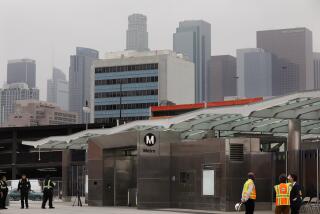NONFICTION - Oct. 3, 1993
- Share via
722 MILES: The Building of the Subways and How They Transformed New York; by Clifton Hood (Simon & Schuster: $25 ; 335 pp.) Here is the story of the subway when it was still a tender glimmer in the eyes of its creators, before it became the smelly subterranean stage for Bernard Goetz and other vigilantes. It is the longest rapid transit system in the world, 722 miles, with 6,400 subway cars and 469 stations. It took 40 years to build (from 1900 to 1940), helped shape the development of many neighborhoods, joined the five boroughs and turned several areas that would have remained, as in other cities, homogeneous low-density areas into “thickly settled, socially diverse” neighborhoods. It was the brainchild of wild-eyed inventors and engineers who made their marks on entire landscapes. It was financed entirely by the City of New York and two private subway companies and received no federal assistance at all until the last few decades. Between the Manhattan schist, the enormous personalities of contractors, engineers, politicians and businessmen and the high hopes of a skeptical but eager public the building of New York City’s subway assumes heroic proportions. Much of the book, sadly, charts the subway’s fall from civic monument to “national symbol of urban violence and disorder.” “In the end,” writes Hood, “political failures led to the physical deterioration of the subways.”
More to Read
Sign up for our Book Club newsletter
Get the latest news, events and more from the Los Angeles Times Book Club, and help us get L.A. reading and talking.
You may occasionally receive promotional content from the Los Angeles Times.










